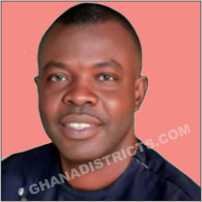

Physical Facilities
The Yilo-Krobo has ninety-two (92) kindergarten/nursery schools, ninety-six (96) primary schools, forty-two (42) Junior Secondary Schools (JSS), three (3) Senior Secondary Schools (SSS), one technical school and one Teachers Training Institution. Out of the total number of schools in the Municipality, 40.7%, 63.4% and 39.4% of classrooms at the Kindergarten, Primary and Junior Secondary Schools respectively, representing 33% were in good condition. This situation has seriously constrained effective learning and teaching in the Municipality. A systematic rehabilitation strategy will not only save property but will also promote teaching and learning in the schools. Refer to table 6.22 in pdf file below.
School Enrolment
School enrolment generally has been high. Out of the projected population of 5,453 aged between 4-5, 4,068 (75%) are in Kindergarten. At the primary level 12,890 (83%) of the Municipality’s projected population of 15,522 aged between 6-11 were enrolled. At the Junior Secondary School level, out of a projected population of 6,876 aged between 6-14, 4,845 (71%) are in school. At the SSS level, with a projected population of 6,224 (i.e. between 15-17), 2,470 (40%) were enrolled.
The expected population used for the above analysis is based on 2005 population projected. The increase in the number of pupils enrolled at the basic school may be due to the capitation grant and also the sensitization of the communities by Ghana Education Service. At all the levels, there is male dominance in enrolment. Refer to table 6.23 in pdf file below.
Reasons for dropping out of School include:
Financial Problem
Children introduced to trading at early age
Misplaced priorities
Teenage Pregnancy
Poor Performance
Peer-Group Influence
Child Delinquent
Death of Parents
School Participation Rate
Participation rate at the basic schools in the Municipality has gone high. This could be due to the capitation grant. School participation rate at the Senior Secondary School level has increased relatively from 543 to 1,411, an increase of 52.7%.
Although participation at the Senior Secondary School has increased, there is still low participation rate at the Senior Secondary School. The low participation rate at SSS could be attributed to the high cost of Secondary School education. It may also mean that a lot of children in this age group are unable to qualify to SSS due to poor performance. Refer to table 6.25 in pdf file below.
The projected population aged 4-5 has exceeded the expected population making the participation rate to be more than 100% for Kindergarten. This could mean that a lot of the pupils in Kindergarten were below the age range 4-5 when the projection was made.
The projected population aged 4-5 has exceeded the expected population making the participation rate to be more than 100% for Kindergarten. This could mean that a lot of the pupils in Kindergarten were below the age range 4-5 when the projection was made.
Teacher/ Pupil Ratio
There are a total of 1171 teachers in the Municipality for both public and private schools. 170, 542, 320 and 139 teachers are in Kindergarten, Primary, Junior Secondary School and Senior Secondary School respectively. The teacher/pupil ratio is 1:36, 1:27, 1:17 and 1:29 for KG, Primary, JSS, SSS respectively. The teacher/pupil ratio has increased due to the enrolment drive by the capitation grant. Refer to table 2.26 in pdf file below.
Performance of Education in the Municipality
There has been a steady improvement in the performance of education in primary, J.S.S. and S.S.S. The performance in primary school for instance has increased from 25% in the year 2004 to 45% in the year 2005 whiles that of the J.S.S. has improved from 44.8% to 47.96%. This situation even though encouraging there is still more to be done if the Municipality is to produce the right caliber of people. Refer to table 6.27 in pdf file below.
Literacy rates in the Municipality
Human Resource Development starts with education. Education does not only broaden one’s perspective on wide issues but also opens up access to greater opportunities for improvement in ones living conditions. Much information is transmitted in written form and therefore the ability to read and write is very essential. In the District, only about 45.7% of the people aged 15 and above can neither read nor write. This is really an unfortunate situation and a challenge to the Municipal Assembly and GES to reduce the rate of illiteracy. Refer to table 6.28 in pdf file below.
Skills and Entrepreneurial Development for the Youth
The Municipality can boast of only two vocational and technical institutions; one for the physically challenged, established by the Department of Social Welfare and located in the Municipal capital and private Technical School known as Somanya Technical School (SOTECH).
These two schools are not enough and not well equipped to take care of the skills training needs of the Municipality. They also lay emphasis on skills training, leaving entrepreneurial development. Due to the number of these institutions in the Municipality, the youth in the Municipality who want to acquire vocational and technical skills are forced to go into apprenticeship with Master tradesmen in various trades.
Some of these Master Tradesmen overuse these young ones for their own selfish gains. Some therefore complete without enough skills acquired to establish themselves. About 3000 young persons require skills training to enable them go into self-employment to contribute their quota towards the development of their communities, the Municipality and the nation at large.
The traditional apprenticeship in the municipality includes tailoring, barbering, dressmaking, hairdressing, fitting or auto mechanic, welding, electronics, vulcanizing, carpentry and joinery, masonry, draughtsman ship.
Date Created : 11/28/2017 1:27:26 AM










 facebook
facebook
 twitter
twitter
 Youtube
Youtube
 +233 593 831 280
+233 593 831 280 0800 430 430
0800 430 430 GPS: GE-231-4383
GPS: GE-231-4383 info@ghanadistricts.com
info@ghanadistricts.com Box GP1044, Accra, Ghana
Box GP1044, Accra, Ghana